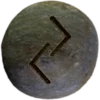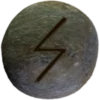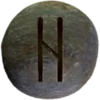Last Updated on March 27, 2025


History and Mythology
Yule, also spelled Jól (pronounced “yohl“), was a winter festival celebrated by Norse and Germanic peoples. The festival honored gods, spirits, and ancestors. It lasted multiple days, often twelve. Many modern Christmas traditions stem from it. It took place around the winter solstice, and marked the year’s darkest time and the sun’s rebirth. Feasting, drinking, and sacrifice (blót) were central. People welcomed spirits into homes and held great feasts. The Yule log symbolized warmth and protection.
People exchanged gifts, similar to modern customs. They also performed divination, seeking omens for the next year. Fires burned through the night to ensure light’s return. This period was a time of storytelling and strengthening bonds.
Yule’s importance appears in sagas and poems. The Saga of Hákon the Good describes King Hákon’s attempt to align Yule with Christian celebrations. The Poetic Edda mentions Jólnir (yohl-neer), an epithet of Odin, linking him to Yule.
Sacred Offerings and Blóts
A blót (bloat) was a sacrificial ritual. People offered food, drink, or animals to gods and spirits. Odin, Thor, and Freyr were common recipients. Odin, associated with wisdom and the dead, played a major role.
Drinking was important. Mead and ale flowed during celebratory feasts. The Yule boar, linked to Freyr, was central to the festivities. People made vows over it, swearing great oaths. This tradition evolved into modern New Year’s resolutions. Oaths carried heavy weight in ancient times, and breaking them brought dishonor. The sumbel (soom-bell), a ritualized drinking ceremony, reinforced community ties. Each round, people made toasts to gods, ancestors, or personal achievements.
Homes and temples were decorated. Greenery, like holly and ivy, symbolized life. Evergreens represented resilience. Many modern decorations trace back to these customs.
The Wild Hunt and the Dead’s Procession
This was a liminal time where the veil between worlds thinned, allowing ghosts, spirits, and gods to roam freely. The Wild Hunt, called Asgardsreið (ahs-gards-rayth) and led by Odin, swept through the skies. Odin, disguised as a wanderer, visited homes, rewarding generous hospitality while punishing greed. Some traditions linked him to modern stories of Santa Claus. His eight-legged horse, Sleipnir, may have inspired the idea of reindeer.
Yule was also a time for ancestor veneration. Families set places at tables for the dead. Offerings ensured blessings for the coming year.
Yule Log and Fire Rituals
Fire played a crucial role in celebrations. The Yule log burned for several days, while it symbolized warmth, protection, and continuity. People saved its ashes or unburned pieces for luck.
Lighting a Yule log was a sacred act. If it burned continuously, good fortune followed. Extinguishing it early brought bad luck. Some carved runes into logs for added protection.
Candlelight held deep meaning. It represented the sun’s return. Bonfires were also common. They pushed away darkness and spirits. This was a time for merriment. People feasted on meat, fish, and baked goods. Boar and goat were common dishes, and the mead flowed freely.
Skalds recited poetry. Storytelling preserved history and entertained guests. People sang songs called drápur (drah-poor). Some songs praised gods, kings, or great warriors.
Yule goats, Julebukk (yoo-leh-book), were part of these celebrations. The goat, linked to Thor’s chariot, was an enduring symbol, inspiring people to dress as goats, spreading cheer and collecting treats.
This Season’s Legacy
Yule left a lasting mark on modern celebrations. Many Christmas traditions stem from it. Gift-giving, feasts, evergreen decorations, and candlelight all have Norse origins.
Though Christianity changed many aspects of this season, some customs survived. Scandinavian countries still celebrate Jul (yool), and the Yule Goat remains a festive symbol.
Ancient Norse saw this as a time of renewal. They honored the past and embraced the future. Their traditions, though evolved, still shape winter celebrations today.
Runes Associated with Yule
The Elder Futhark rune Jēra relates closely to Yule. Jēra symbolizes the natural cycles, including the year’s turn from dark to light. It captures the theme of rebirth and the promise of brighter days. Another rune, Sowilō, connects with the sun’s return. This rune symbolizes hope, victory, and light overcoming darkness. Together, Jēra and Sowilō reflect Yule’s spirit of renewal and hope.
Importance in Asatru
In Asatru, Yule represents a sacred time of unity, warmth, and reflection. Followers celebrate the natural cycle and honor the light’s return, bringing families and communities together. It emphasizes the importance of family bonds, gratitude, and intentions for the coming year. Asatru practitioners honor Yule’s ancient traditions while celebrating new beginnings and the strength of shared rituals.


